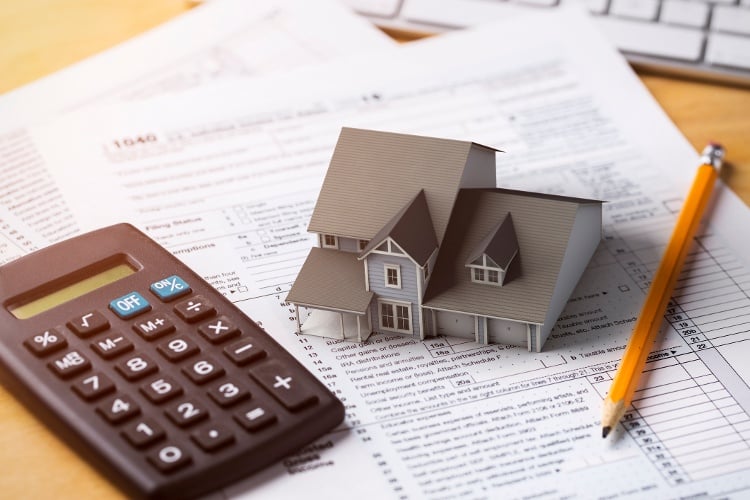A 1031 exchange – also known as a like-kind tax deferred exchange or Starker Exchange – is a process used by real estate investors around the country to defer the payment of capital gains tax.
Section 1031 of the U.S. Internal Revenue Code outlines the rules investors must follow to defer paying any capital gains tax due by selling (or relinquishing) one or more pieces of investment real estate and purchasing other like-kind replacement properties.
Whether you’re just beginning your rental property investment business or are an experienced owner, this guide will serve as a valuable reference tool for you. You will learn the general rules of a 1031 exchange, how tax deferred exchanges work in real life, and important terms and phrases to know about the 1031 exchange process.
Why Investors Do 1031 Exchanges
The number one reason real estate investors conduct a 1031 exchange is to sell one investment property and buy another and defer paying any capital gains tax that would normally be due. Deferring payment of the capital gains tax provides investors with more capital for investing in income-producing real estate.
But deferring the payment of capital gains tax isn’t the only reason real estate investors conduct a 1031 exchange. Other benefits of using a 1031 tax deferred exchange to relinquish one property and acquire another include:
- Selling an under-performing property and acquiring a replacement property with a higher projected yield
- Diversifying a real estate portfolio by redistributing capital across different geographic areas or asset classes
- Exchanging several single-family rental properties into an existing portfolio of professionally managed housing units
- Dividing a single large investment such as an apartment building into several smaller rental properties, for the purpose of estate planning or gradual disposition of assets
- Transitioning from commercial real estate investments into more counter-cyclical residential income property
- Avoiding the increase in taxable income due to depreciation recapture when an investment property is sold but not replaced with another.

General Rules of a 1031 Exchange
There are three main types of 1031 like-kind exchanges that we’ll discuss later on in this article. Each type of exchange can be conducted to meet the specific needs and objectives of an investor. However, there are several general rules that all 1031 exchanges must follow regardless of the type of exchange being conducted.
Same taxpayer
The IRS considers a 1031 exchange to be a continuation of ownership from the original investment property even though the specific property changes. Because of this, title to the replacement property must be in the same name as the title to the relinquished property. The taxpayer name can be an individual, LLC, corporation, trust, or other legal entity.
Investment property
Real estate in a 1031 exchange must be held for business or investment purposes. This includes asset classes such as office buildings, shopping centers, land, multifamily property, and single-family rental houses.
IRC 1031 does not allow personal residences or property used as stock in trade to be used as part of a tax deferred exchange.
Stock in trade
The IRS considers stock in trade to be real estate that is held mainly for resale purposes by a dealer. Two examples of stock in trade are residential units built for resale by a real estate developer, property that is being fixed-and-flipped, or wholesale investors who assign the purchase contract to another investor.
There are three guidelines the IRS follows to determine if real estate is used for investment and business purposes, or for stock in trade:
- Length of time the real property is held
- Purpose behind the acquisition and use of the real estate
- Principal business of the individual or entity buying the property
U.S. property restrictions
Since 1989 the IRS has only allowed real estate held for investment purposes in the U.S. to be exchanged for like-kind property in the U.S., in order to qualify for a 1031 exchange. However, because the United States taxes income worldwide, IRC Section 1031 allows foreign property to be relinquished and exchanged for other foreign property.
There are private rulings and case law that supports using property in U.S. territories such as Puerto Rico, U.S. Virgin Islands, and American Samoa as part of a 1031 exchange. But, because these transactions vary by case, it is best to consult a qualified intermediary or tax advisor who is familiar with U.S. and international real estate and tax law.
Boot
When the value of the replacement property in a 1031 exchange is less than the value of the relinquished property, the difference between the two is called “boot.”
Since not all of the profit or gain from the sale was used to purchase a replacement property an investor must pay capital gains tax on the boot in the year the exchange took place.
Mortgages
Relinquished property with an outstanding mortgage can be used as part of a 1031 exchange. To avoid accidentally incurring boot, the mortgage amount of the replacement property must be the same or greater than the mortgage balance of the relinquished property.
For example, if an investor’s relinquished property has a mortgage balance of $200,000 but the mortgage on the replacement property is only $150,000 the investor will have a taxable capital gain – or boot – of $50,000.
Possession of money
Investors cannot take possession of the sales proceeds between the sale of the relinquished property and the purchase of the replacement property in any way, shape or form. If they do, the IRS will consider the investor to have “touched the money” and the entire amount will be considered boot and subject to capital gains tax.
A qualified intermediary is used to hold the sales proceeds for the investor and disburse the funds for payment of the replacement property once it is acquired.
Related party transactions
The IRS defines related parties as:
- Family members including full and half siblings, spouses, ancestors, and direct lineal descendants
- Corporate entities with more than 50% of its stock owned by a family member
- A grantor or a fiduciary of a common trust
- Other corporate entities such as an IRC Section 501 organization, executor, or beneficiary of a common estate
While the Internal Revenue Code doesn’t prohibit 1031 exchange transactions between related parties, there are two restrictions to related party transactions:
- Property that is relinquished to or acquired from a related party in a 1031 exchange must be held for at least two years from the date of the tax deferred transaction in order to qualify for deferral of capital gains tax
- Replacement property does not qualify for tax deferred treatment if it was acquired from a related party and that party received cash or other personal property in the transaction.
Originally the IRS had no restrictions on 1031 exchanges between related parties. However, the IRS eventually discovered that related parties were taking advantage of tax deferred exchanges to shift the basis of the property and increase it to gain a tax advantage before quickly re-selling the property.
There are some exceptions to the two-year holding rule that are listed in Subsection 1031(g) of the IRC. However, investors should always keep the two-year rule in mind if the exchange involves a related party to avoid being suspected of basis shifting by the IRS.

Timelines and Identifying Replacement Property
In order to maximize the amount of capital gains tax deferral investors should purchase a replacement property whose value is greater than the relinquished property. Doing this avoids the risk of receiving “boot” and accidentally incurring a capital gains tax.
How to identify a replacement property
The IRS considers a replacement property to be “identified” when there is a written purchase contract from the buyer accepted by the seller.
The contract should have a contingency clause advising that the property is being acquired through the buyer’s 1031 exchange, with the seller agreeing to cooperate with the buyer’s exchange at no additional cost or liability to the seller
Rules when identifying more than one replacement property
When conducting a 1031 exchange an investor is allowed to identify more than one replacement property during the 45-day identification window.
This gives the buyer an opportunity to ‘shop around’ for the choice of replacement property that meets the short-term needs of the tax deferred exchange and the long-term objectives of the buyer’s investment strategy.
IRC Section 1031 has three rules that apply to identifying replacement property, but investors only need to select one of the following three:
Three-property rule: An investor may identify up to three replacement properties regardless of their market value but must only purchase one of the three. This allows the investor to “tie-up” replacement options before deciding on which property to purchase.
95% rule: An investor may identify an unlimited number of properties but must purchase 95% of the aggregate value of the identified replacement properties. This replacement rule is useful for investors who may be unsure of where they want to purchase new property or the asset class they want to invest in.
200% rule: An investor may identify an unlimited number of replacement properties as long as the total combined value of the identified properties does not exceed 200% of the value of the relinquished property. This rule is useful for the investor who is relinquishing a single large asset like a commercial office building and replacing it with several single-family rental homes.
Timelines to follow
Regardless of the identification option being used or the type of 1031 exchange being conducted, the timelines to follow are always the same:
- Within 45 days of closing on the relinquished property, identify a replacement property for the one sold.
- Within 180 days of the sale of the relinquished property, close on the purchase of the replacement property.

Types of 1031 Exchanges
The definition of a “like-kind” exchange is based on a property’s nature or characteristics rather than the type or quality of the real estate, according to IRC Section 1031.
In practice, this means that a commercial retail center can be exchanged for a group of single-family rental homes, raw land can be relinquished and replaced with an industrial distribution center, or a large apartment building may be replaced with farmland.
Clearly, a like-kind exchange offers real estate investors a wide array of options to diversify, scale up, and grow an investment portfolio.
There are also three types of 1031 like-kind exchanges, with slightly different sets of procedures and requirements to adhere to so that the payment of capital gains tax isn’t accidentally triggered.
1. Delayed 1031 Exchange
A delayed 1031 exchange is the most common type of tax deferred exchange. This type of exchange is called “delayed” because it must be completed within 180 days of relinquishing the property that is being replaced.
Before 1979 tax deferred exchanges had to be done simultaneously. In other words, the sale of the relinquished property and the purchase of the replacement property had to occur at the exact same time. While this type of back-to-back escrow may have worked 40 years ago, today’s real estate marketplace is much more dynamic than it was decades ago.
Simultaneous exchanges still can and do occur, but they are generally few and far between. In 1979 the Internal Revenue Code was amended to allow non-simultaneous exchanges to take place over a 180-day period to allow investors to qualify for deferring the payment of capital gains tax provided they follow these three steps:
- Close on the sale of the property being relinquished with sales proceeds accepted directly by a qualified intermediary.
- Identify one or more replacement properties within 45 days of the closing of the sale of the relinquished property.
- Close on the purchase of the replacement property (or properties) within 180 days of the sale of the relinquished property, with the qualified intermediary transferring the sales proceeds being held to the seller of the replacement property.
2. Reverse 1031 Exchange
As the name implies, a reverse tax deferred exchange is the opposite of a delayed exchange. In a reverse 1031 exchange an investor acquires the replacement property first, before selling the relinquished property.
However, a real estate investor must do two things prior to properly conducting a reverse exchange.
First, the investor must sign a qualified exchange accommodation agreement with a qualified intermediary. Second, the investor cannot take possession of the replacement property until the relinquished property is sold. Instead, the qualified intermediary or an accommodation titleholder must hold the property until the entire reverse exchange is completed.
The steps to follow when conducting a reverse 1031 tax deferred exchange are:
- Close on the replacement property purchase prior to the relinquished property being sold, with the accommodation titleholder or qualified intermediary holding the replacement property for the investor.
- Identify the relinquished property to be sold within 45 days of closing the purchase of the replacement property.
- Close on the sale of the relinquished property within 180 days of the purchase of the replacement property, at which time the accommodation titleholder or qualified intermediary transfers the replacement property to the investor.
Conducting a reverse exchange allows a real estate investor to quickly take advantage of an unexpected opportunity, such as a seller who needs to sell fast or property suddenly becoming available that other competitors want to purchase.
3. Build-to-Suit 1031 Exchange
A real estate investor developing a new property replacement from the ground up or significantly renovating an existing property may conduct a build-to-suit 1031 exchange.
This type of exchange follows the same 180-day timeline of the reverse and delayed exchanges. All construction and renovation work on the replacement property must be completed within the 180-day time frame.
If not, any remaining work or improvements done past the 180-day window will not qualify as part of the build-to-suit exchange, the value of which will be treated as personal property by the IRS.

Example of a 1031 Exchange
Now let’s look at an example of how a 1031 tax deferred exchange works in the real world of real estate investing.
Because we’re making certain assumptions about depreciation, mortgage balances, and potential tax liability, this example is for illustrative purposes only. If you’re thinking about conducting a 1031 like-kind tax deferred exchange be sure to consult with your financial advisor to ‘crunch the numbers’.
Step 1: Property being relinquished
Bob and Janet are buy-and-hold real estate investors. Back in 2012 they purchased a single-family rental property in Los Angeles for $350,000. They acquired the property using a conventional loan, put 20% down and financed the rest:
Equity paid by the investor: $70,000
Mortgage financing: $280,000
Purchase price: $350,000
Step 2: Calculate adjusted tax basis
The couple is thinking about selling the Los Angeles home and want to compare the tax impact of ‘cashing out’ versus conducting a 1031 tax deferred exchange by using the sales proceeds to purchase rental property in South Carolina, where their daughter and her husband live.
The next step is to calculate the adjusted tax basis of their current rental property:
Original purchase price: $350,000
Plus closing costs: $5,000
Plus new roof and HVAC: $20,000
Less depreciation deduction taken: <$90,000>
Adjusted tax basis: $285,000
Step 3: Determine realized gain
Over the past eight years the median price of a single-family home in Los Angeles has more than doubled in price, according to Zillow. Today, Bob and Janet’s rental home has a fair market value of $800,000.
If Bob and Janet sell their rental property at fair market value, their realized gains would be:
Sale price: $800,000
Less closing costs: <$50,000>
Equals net selling price: $750,000
Less adjusted tax basis (from above): <$285,000>
Realized gain: $465,000
Step 4: Calculate net cash received
Although Bob and Janet have aggressively paid down their mortgage over the past eight years, there is still a balance due that would need to be paid off when the property is sold:
Sales price: $800,000
Less mortgage balance pay off: <$200,000>
Less closing costs: <$50,000>
Net cash received on sale: $550,000
Note that there’s a difference between the realized gain and the net cash received. We’ll use each number in the following two steps.
Step 5: Determine potential tax liability
Now, let’s determine the amount of taxes Bob and Janet would pay if they did not conduct a 1031 exchange and paid the taxes on their realized gain of $465,000.
We’re making certain assumptions about the couple’s income level and tax brackets, so the actual amount of taxes due will vary by investor and location:
Federal capital gains tax: 20% $93,000
Federal depreciation recapture: 25% $116,250
Affordable care act surtax: 3.8% $17,670
California capital gains tax: 13.3% $61,845
Potential tax liability: $288,765
Step 6: Defer the capital gains tax
If Bob and Janet conduct a 1031 exchange, they can defer paying their potential tax liability and have nearly $290,000 more to invest in income producing rental real estate:
With a 1031 tax deferred exchange
Net cash received from sale: $550,000
Tax liability: $0
Capital to invest: $550,000
Without a 1031 tax deferred exchange
Net cash received from sale: $550,000
Tab liability: <$288,765>
Capital to invest: $261,235
According to Zillow (as of February 2020) the median sales price of a single-family home in Charleston where their daughter and her husband live is $314,400.
By conducting a 1031 exchange to defer their tax liability the couple will save almost enough money to buy two rental properties in South Carolina instead of paying tax to the government and only having enough sales proceeds to buy one.

7 Steps to Defer Capital Gains Tax
After reading this article it’s easy to understand why so many rental property investors view the IRS and tax law in the U.S. as being very friendly to real estate investors.
Conducting a 1031 like-kind tax deferred exchange allows property investors to continually build a portfolio by investing money that would otherwise be paid to the government in the form of capital gains tax.
In order to capture the benefits of conducting a 1031 exchange and defer 100% of the capital gains tax owed investors should follow these seven steps:
- Real estate must be like-kind, in other words of the same nature or character, but does not have to be the same type – such as commercial being relinquished for residential or land being replaced with industrial.
- Property must be used for investment or business purposes but cannot be stock-in-trade or a personal residence.
- Replacement property must have a value equal to or greater than the property being sold or relinquished.
- Boot may not be received by exchanging a property with a higher value for a new property with a lower value.
- Name of the titleholder for both the relinquished and replacement property must be the same.
- Within 45 days of the close of sale of the relinquished property the investor must identify one or more replacement properties.
- Within 180 days of the close of sale of the relinquished property the investor must close on the purchase of the replacement property.
Glossary of 1031 exchange terms
- Boot: Profit subject to capital gain tax when the replacement property value is less than the value of the relinquished property
- Capital gain or loss: Difference between the acquisition and sales price of an asset
- Deferred exchange: Occurs when a relinquished property is replaced with another like-kind property
- Delayed exchange: Occurs when the relinquished property is sold first and replaced with a like-kind property within 180 days
- Identification period: 45 day period in a 1031 exchange during which the investor must identify one or more replacement properties
- IRC 1031: Section 1031 of the Internal Revenue Code covering tax deferred exchanges
- Like-kind exchange: Replacing one investment property used for business purposes with another
- Qualified intermediary: An independent third-party acting recognized by the IRS as a ‘middle man’ in a 1031 exchange
- Relinquished property: Property sold in a 1031 exchange
- Replacement property: Property acquired in a 1031 exchange
- Starker exchange: Another term for a 1031 tax deferred exchange
- 180-day exchange period: An investor conducting a 1031 exchange has 180 days from the closing of the sale of the relinquished property to close on the purchase of the replacement property
- 45-day identification period: An investor conducting a 1031 exchange has 45 days from the closing of the sale of the relinquished property to identify one or more replacement properties
Wrapping Up
Using a 1031 tax deferred exchange provides investors with a unique opportunity to preserve capital, add additional income-producing property to a portfolio, and restructure and diversify asset holdings.
Conducting a 1031 exchange can be complicated, but as long as the rules are followed rental property investors can fully defer the payment of capital gains tax. Rather than unnecessarily giving money to the government, investors can legally defer the tax and instead use that money to generate more cash flow from real estate.
If you’re interested in carrying out a 1031 exchange, Roofstock’s marketplace of leased single-family rental properties makes it easy to purchase and own customized portfolios of certified, cash flowing homes within 1031 exchange time limits.
Go here to learn more and schedule a consultation to receive guidance on our tools and services designed to aid you in identifying the right portfolio size to match your needs.









